Five days of rapid growth of children! Hokkaido Summer Camp Report!
Hello, this is Kaburaki, the president of GLI, and welcome to the GLI Summer Camp in Hokkaido, which was held from August 1 to 5, 2011.

Most importantly, there were no serious injuries, and it was only for five days,Camps where children's growth can be felt day by dayIt was so much fun that I wanted to deliver it to your home with a hidden camera so you could see it. It was five days of growth every day, and I am not just saying that to flatter you, but I want you to see it.
The past three years,Children are not getting the experience they should be getting because of the corona.This reality is very worrisome for children. We hope to have more opportunities like this in the future.
Aim of this camp
Camping in the wilderness of Hokkaido for 5 days. The purpose of this camp was toTrekking into the forest on horseback, going on a "horse trip".It is. Having said that, looking at the text alone, it may seem simple.
However, I will tell you one thing,This is not a ready-made horseback riding experience where the rider pulls the reins and circles the track on a horse that has been accustomed to being ridden by a human being.
"Horses living in the wilderness of Hokkaido."Against,The goal of this camp is how to communicate with them (the horses), win their trust, and get them on our backs to go on a horse trip!It is.
How can you or your paired team overcome the numerous challenges that you must clear before you can go on a horse trip? and then take action. We designed this camp based on the belief that this is where children grow. This was the goal of the camp.
Children taking on challenges
Incidentally, the objective of theChallenges to overcome before "going on a horse trip"is a bigFive.It is.
1) Find your favorite horse in the forest and attach a mute (chinstrap).
2) Pulling back on the reins to control the horse
(3) Communicate by brushing and feeding.
(4) Place the saddle on the back correctly.
5) Show leadership when walking.
I would like to talk about each of them, touching on actual photos and what they were like back then. I would like to talk about each of them, touching on actual photos and the situation at that time.
By the way, at the end of the activity,How was your day? What was difficult? What are your challenges for tomorrow? The purpose of this session is for participants to verbalize in their own words what they felt, so that they can feel their own growth and awareness.

Not for all the children who work hard every day,"Fearless Leader", "Laugh in the face of fear award", "Solid as a rock". "Jack of all trades", "Horse Whisperer", etc.were given. Now back to their "challenge".
Challenge 1) Find your favorite horse in the forest and attach a mute (chinstrap).
For the children, everything was completely new. It is also their first time in the forests of Hokkaido, horses in the forests, and of course, putting a mute on a horse.
The horses you see on TV are cute, but when you actually see them up close, they are so big and scary. two teams of two consult with each other to decide which horse they want and put on the mute, but they are so scared that they can't get close enough, they are eating grass all the time and won't lift their heads.
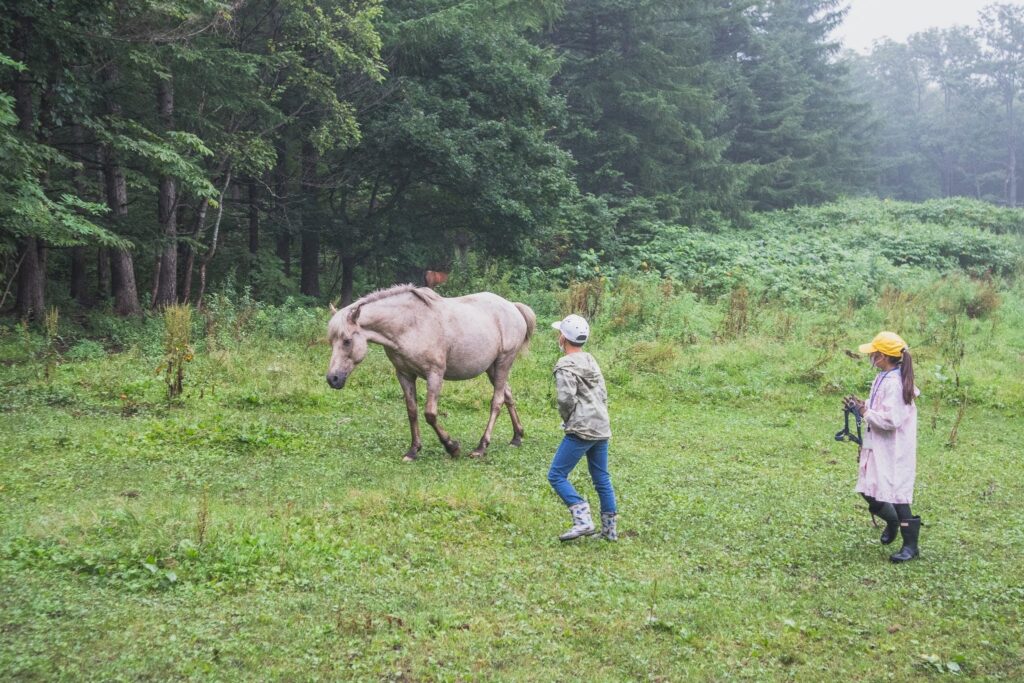
In the preliminary study, what kind of animal is a horse? How can we catch them? However, when the time came, they were afraid of the big horse and became timid, or they had to work together as a team to catch the horse, but fights broke out among the team members.
But also.Valuable experienceWe must not only argue our point of view, but we must also think and summarize it ourselves. Not only do they have to argue their points, but they also have to think and summarize on their own how they can settle the issue and where they are at fault after the discussion. This must have been a good opportunity for them.
Challenge 2: Pulling back the reins to control the horse
Horses are herd animals. They have a leader and they follow that leader. So if you don't take leadership, they won't listen to you.
In addition, numerous precautions must be taken when communicating with a horse. Don't stare at their eyes, don't look at their stomachs, don't hold your breath, and approach from the front. These are all habits that horses have acquired to protect themselves from predators, and they think they will be attacked if they violate these rules.
And once the reins are in their hands, they must behave with dignity or they will not listen to what you say, and if the puller panics, the horse will go berserk. The children did an excellent job with these numerous precautions.
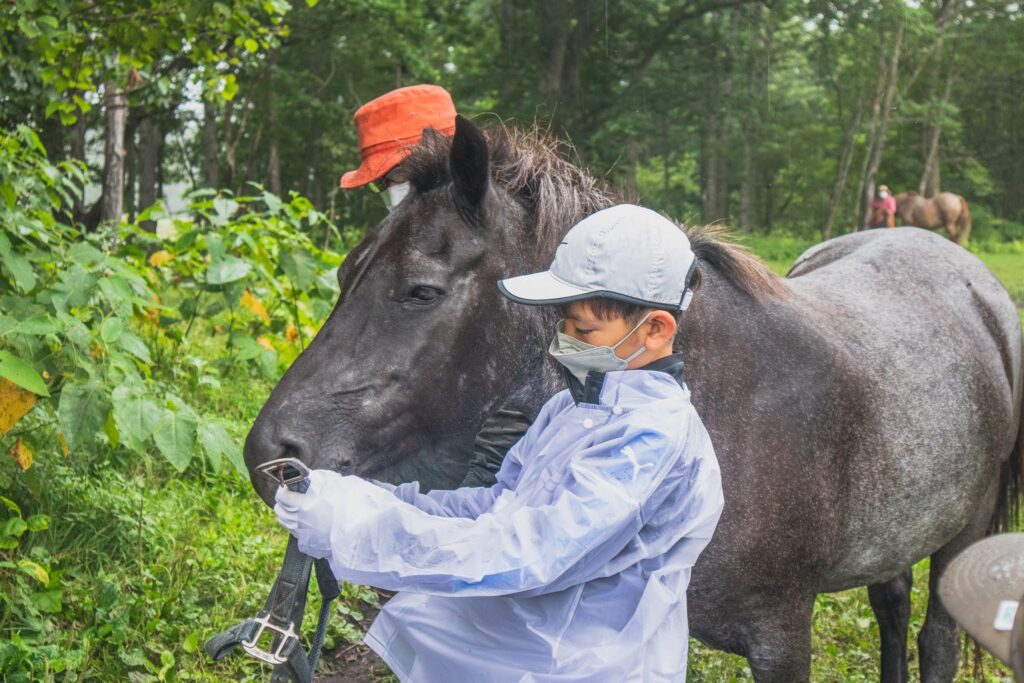
Challenge 3) Communicate by brushing and feeding.
Their challenge still continues. Next up is brushing, scared of being kicked and scared of being stepped on. Do not stand behind the horse. Also, when raising the feed, there is a risk of being bitten, so at first, they were very nervous about such danger (laugh).
Although fear overtakes them, and they are not always as cute as they would like to be, they gradually gain the courage to brush the cat, and it is even encouraging to see them do so.
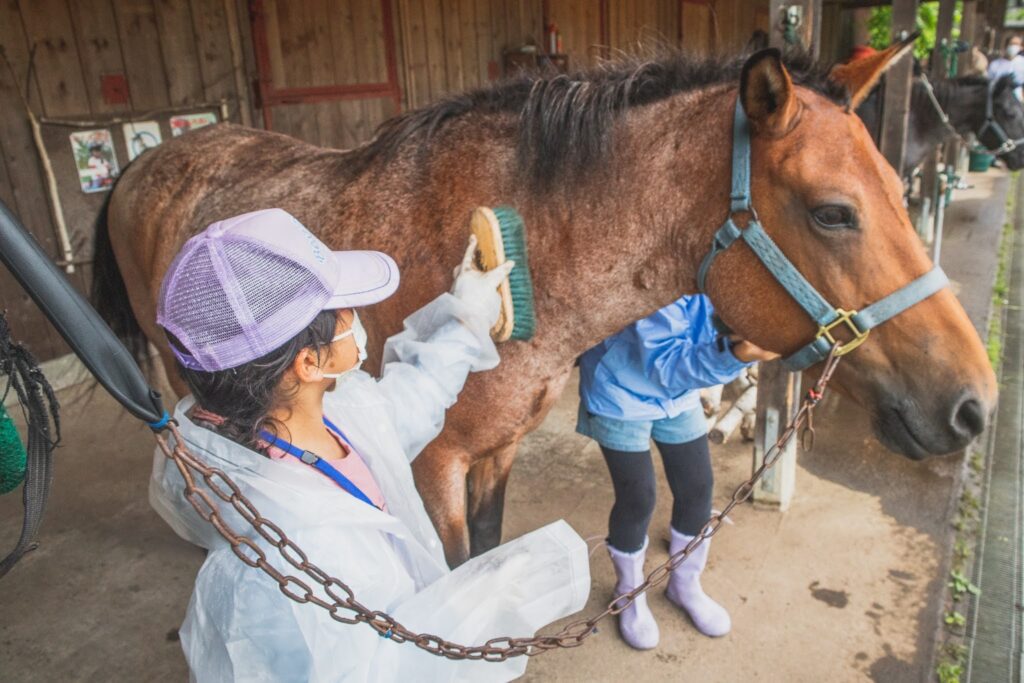
Challenge 4: Put the saddle on your back correctly.
The saddle weighs more than 15 kilograms. Even for an adult, it is extremely difficult to put the saddle on the horse's back. Moreover, two sheets of cloth must be placed under the saddle so that the horse does not feel pain.
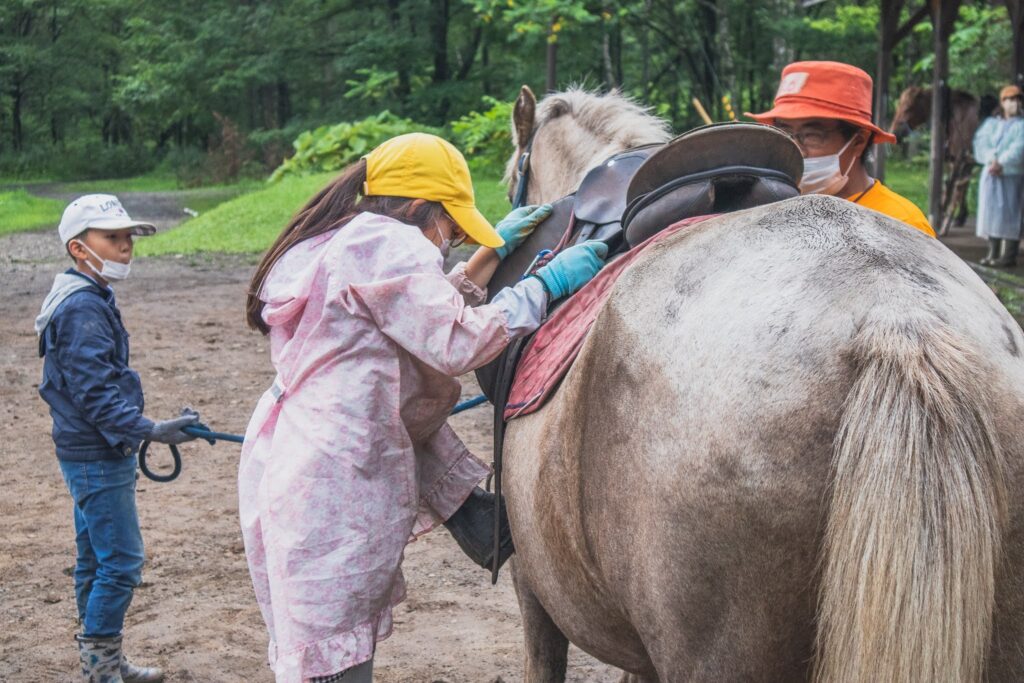
Also, the band that occupies the saddle must be tightened firmly or the rider will fall off, so strength is required. If the rider is not able to ride the horse securely, the horse instructor's permission will not be granted. Since I couldn't do it alone, I had to work together with my team members, but we often had fights because we couldn't get along. Even so, I felt that the team members had grown in their ability to complete the challenge.
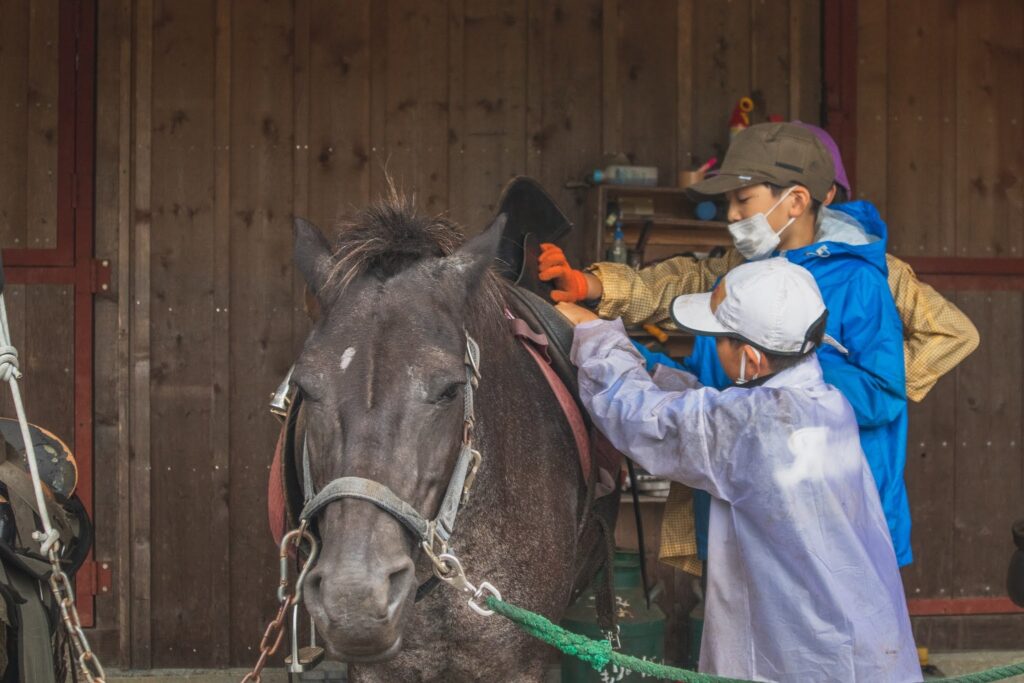
Challenge #5: Show leadership while walking.
Since the ultimate goal is to go on a long ride in the woods, do not allow the rider to eat the food or go in any direction on his own during the ride. Also, it is dangerous for the rider if the horse lowers its head to eat food when someone is riding on top of it. Therefore, it is necessary to make the horse do what the rider says. If the horse is not allowed to move to the right or left, the rider and himself are in danger.

After overcoming these obstacles and taking the certification test on the morning of the last day, we can finally go out riding in the woods for about 2 km.
The scenery in the forest is otherworldly.A view that can never be experienced in Tokyo.A walk in the woods where you overcome your fears, fight with your teammates, and finally master the art of riding a horse or pulling on the reins.
It was light rain and cloudy the whole time,On the afternoon of the fourth day, we were rewarded with blue skies. What does the view from the horse look like to children? I think it is a view that adults will never understand.
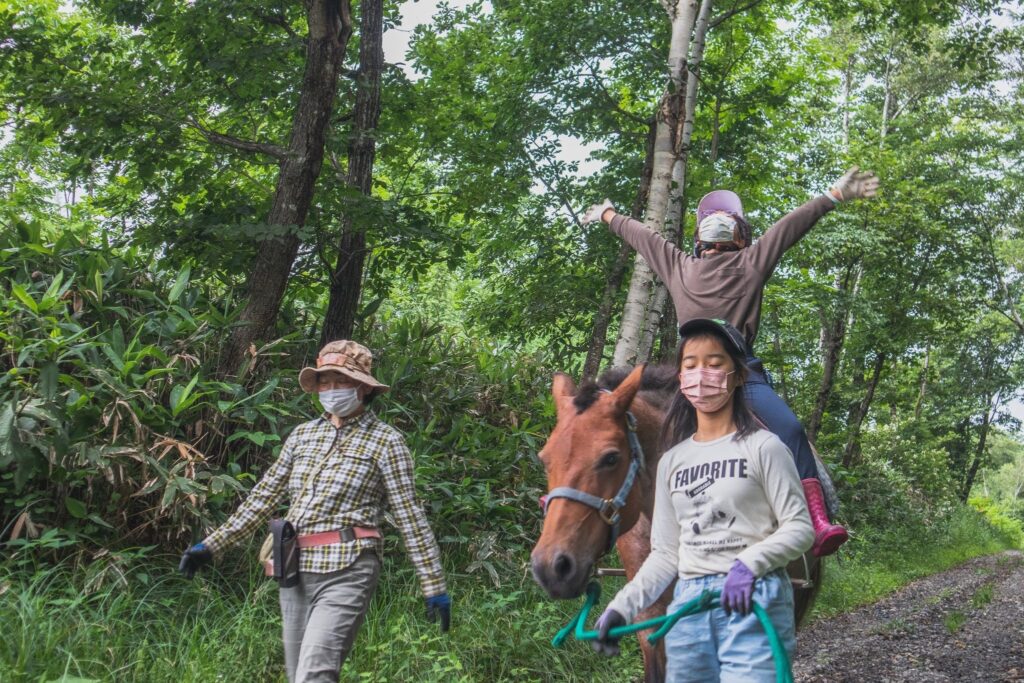
And here is the last day of the activity,Children with confident faces before leaving for the "horse tripIt is.
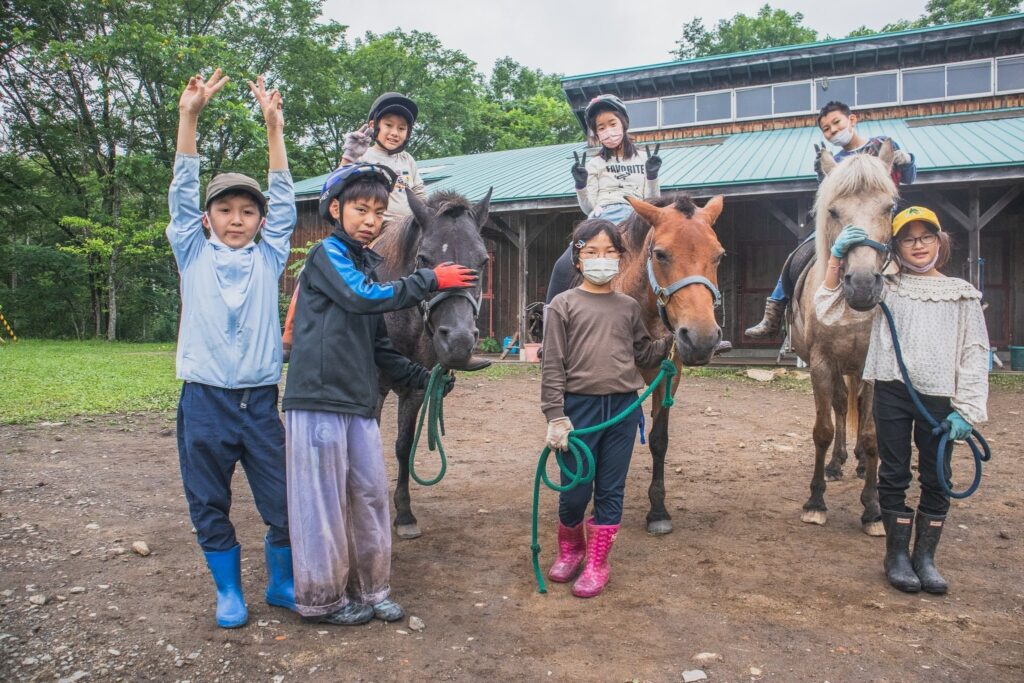
I was allowed to accompany them, as well as the parents who were worried about their own children at home,I'm just amazed at the difference in their expressions.It was a scene that truly embodied the phrase, "The environment nurtures the child. It was a scene that truly embodied the phrase "the environment nurtures the child.
Incidentally, I took responsibility for my role not only in horseback riding but also in activities such as cooking, from shopping to cooking.An experience that can only be accomplished if everything is communicated voluntarily.It was all over the place.
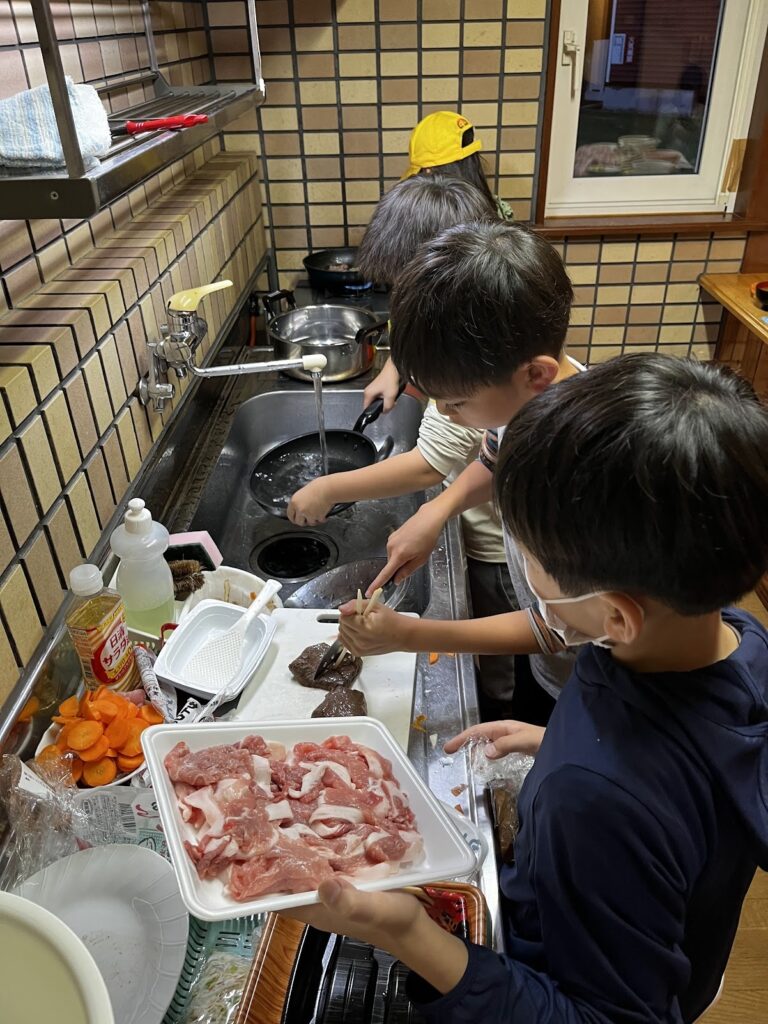
What the children learned throughout the five days
I would like to organize this again. This timeThroughout the five days, they acquired"qualities" or "abilities."but...
1: Courage to face new things and things
Never give up and keep trying, and you will always move forward.
2: Difficulty in correctly using the skills and knowledge taught
The frustration and frustration of not being able to do it correctly even though you have been taught. If you can't do it, you can't ride it, and you can't move forward, so you have no choice but to do something about it. To devise.
3: Ability to discuss with peers and come to terms with disagreements
4: Ability to think, decide and act on one's own
5: A sense of purpose and focus on it.
As we gained courage and skills, we were able to focus on what we needed to do now and help each other to complete a task. Thus, the time to complete a task became much shorter.
6: Sense of accomplishment
I think this needs no explanation.
Participant's Voice
Lastly, I traveled these five days.Here are some comments from participants, their parents, and staff who accompanied themI will do so.
Students who participated
Q. What do you think changed the most before and after you went to the summer camp?
I learned the importance of challenging what I was afraid of. I learned to interact with horses. I became a team player.
● Parents' voices (3)
I did not expect him to want to leave his parents on his own. He doesn't say too much, but the camp experience was a fun memory and an experience that he got through, and he was able to play on a team in a totally different way than he did at school. He said, "I feel that it gave me confidence that I can do it. I feel that it gave him confidence that he could do it. With everyone's generous support, we were able to give him a safe, fun, and wonderful experience. I am glad I was able to participate. Thank you very much.
From the daily photos, I could see that they were able to act responsibly and build friendships with friends they did not know, an experience they could not have in their daily lives.
We feel that the program provided an opportunity to learn and independently think about leadership, social skills, self-confidence, and interest in cooking in a different environment than usual, which can be applied in all situations.
Voice of Accompanying Staff
It was a series of firsts, but the children pulled through and showed wonderful growth. In the program with the horses, they listened carefully to the explanations under any circumstances, repeated trial and error correction, overcame many trials, and I never saw them give up, not even for a moment.
He always acted on his own initiative, immersed himself in his interests, and when he found something he wanted to be able to do, he never hesitated to ask questions, resulting in a series of success stories.
Finally.
In Europe and the United States, summer vacations are often followed by trips to summer camps. And not just for three or four nights, but for several weeks at a time. The reason for this is that, especially in childhoodWe understand that developing the ability to live is more important than studying.It is.
The essence of education is not only study, but rather "learning," which is a broad concept that includes study. Learning is the process of acquiring experience, knowledge, and skills in order to acquire the ability to live. In Western schools and summer camps, this learning is designed in a very effective and practical way.
A learning program that sets hurdles that cannot be achieved without effort and a challenging spirit, sets conditions that cannot be achieved without collaboration with peers, and allows students to reach their goals only after acquiring and utilizing the necessary skills.
The teachers have the skills to encourage the children to think, discuss, and challenge themselves, without being a one-way street, and most importantly, they do not miss any changes in the children's abilities and give them verbal feedback on what they have learned. In the weeks spent in this way, the children grow as human beings.
We at GLI will continue to provide these kinds of experiences that children cannot learn or experience in school. We hope you will consider joining us the next time we hold this event (although we are not sure if we will do the same program).
Thank you for reading this far.
GLI Representative Kaburaki
What's the class atmosphere and lesson content like?"
I would like to discuss my education."
I'm not sure I'll be able to go to school overseas."
If you have such concerns or are interested in GLI
If you have any questions, please feel free to contact us.
Please come to our office for a consultation.
![Harumi, Hiroo, Musashi Kosugi] GLI, an English conversation school specializing in the four skills of English](https://gli-english.com/sndp-rstm8/wp-content/themes/gli-english/assets/img/logo.svg)
![Harumi, Hiroo, Musashi Kosugi] GLI, an English conversation school specializing in the four skills of English](https://gli-english.com/sndp-rstm8/wp-content/themes/gli-english/assets/img/logo-scrolled.svg)

